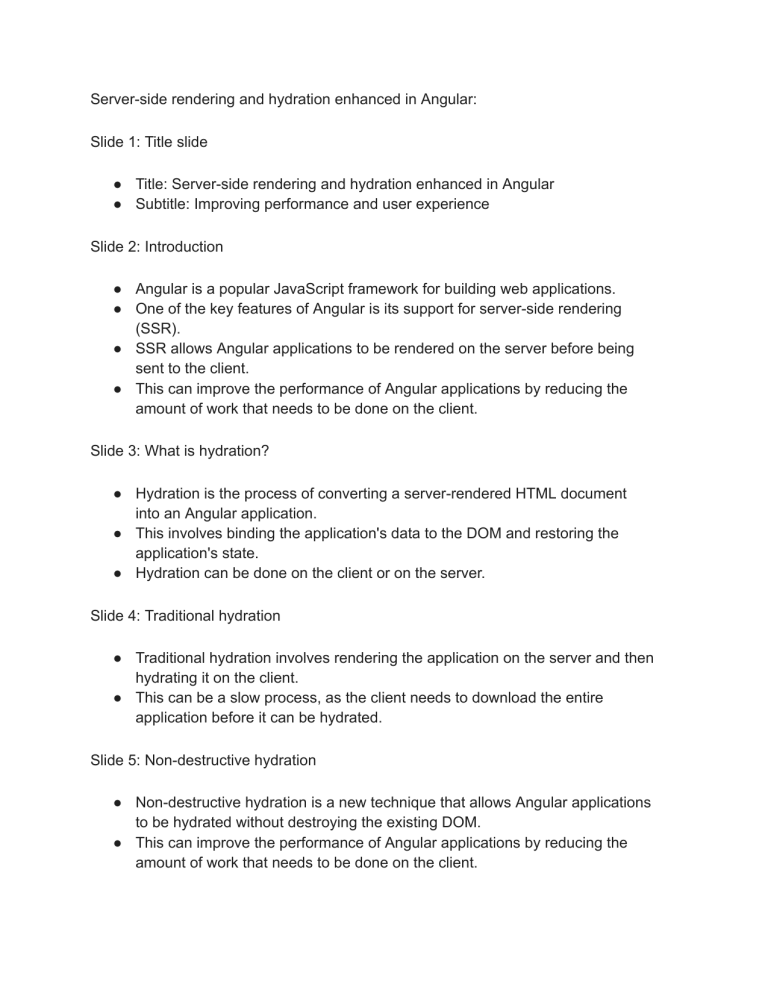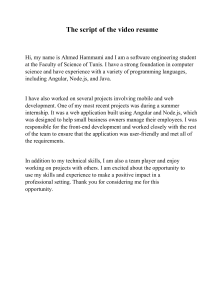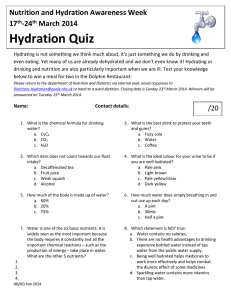
Server-side rendering and hydration enhanced in Angular:
Slide 1: Title slide
● Title: Server-side rendering and hydration enhanced in Angular
● Subtitle: Improving performance and user experience
Slide 2: Introduction
● Angular is a popular JavaScript framework for building web applications.
● One of the key features of Angular is its support for server-side rendering
(SSR).
● SSR allows Angular applications to be rendered on the server before being
sent to the client.
● This can improve the performance of Angular applications by reducing the
amount of work that needs to be done on the client.
Slide 3: What is hydration?
● Hydration is the process of converting a server-rendered HTML document
into an Angular application.
● This involves binding the application's data to the DOM and restoring the
application's state.
● Hydration can be done on the client or on the server.
Slide 4: Traditional hydration
● Traditional hydration involves rendering the application on the server and then
hydrating it on the client.
● This can be a slow process, as the client needs to download the entire
application before it can be hydrated.
Slide 5: Non-destructive hydration
● Non-destructive hydration is a new technique that allows Angular applications
to be hydrated without destroying the existing DOM.
● This can improve the performance of Angular applications by reducing the
amount of work that needs to be done on the client.
Slide 6: Benefits of non-destructive hydration
● Non-destructive hydration offers a number of benefits over traditional
hydration, including:
○ Improved performance
○ Reduced flickering
○ Improved SEO
Slide 7: How to use non-destructive hydration
● To use non-destructive hydration, you need to enable it in your Angular
application.
● You can do this by adding the following import statement to your application's
app.module.ts file:
Code snippet
import {enableNonDestructiveHydration} from '@angular/platform-browser';
@NgModule({
...
providers: [
enableNonDestructiveHydration()
]
})
export class AppModule {}
Slide 8: Conclusion
● Non-destructive hydration is a powerful new technique that can improve the
performance and user experience of Angular applications.
● If you are building an Angular application, I encourage you to try using
non-destructive hydration.
Slide 9: Thank you!
● Thank you for your attention. I hope this presentation has been informative.
![[MATH2019] Final exam notes](http://s3.studylib.net/store/data/025296565_1-0d5b41f3ef39ac8ec6df0bd44c901026-300x300.png)



